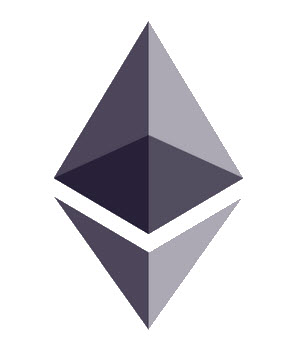 Ether (ETH) is the native currency for Ethereum, a decentralized blockchain with smart contract functionality. This blockchain relies on a proof-of-work system.
Ether (ETH) is the native currency for Ethereum, a decentralized blockchain with smart contract functionality. This blockchain relies on a proof-of-work system.
Ethereum was launched in July 2015. Today, Ether it is the second-largest cryptocurrency by market capitalization.
Ether is the native currency for Ethereum, but it is not the only cryptocurrency utilizing the Ethereum blockchain.
Using Ether to make a deposit or withdrawal
Since Ether is the second-largest cryptocurrency by market capitalization, many of the casinos and brokers that accept Bitcoin have also begun accepting deposits and withdrawals in Ether.
The casinos where you can actually wager in Ether (e.g. put 1 Ether on red at the High Roller´s Roulette Table) are very few, but there are many online casinos that will allow you to make deposits and withdrawals in Ether, even though the wagering will be denoted in a traditional currency such as EUR, USD or GBP.
That same thing is true for most brokers; you can deposit and withdraw in Ether but on the trading platform you will be buying and selling in a traditional currency such as USD.
Depositing Ether into an online casino account
1.) Log in to your casino account and go to the banking area.
2.) Select Ethereum (or Ether) as deposit method.
3.) Follow the instructions on the screen for how to enter the required information and verify the transaction.
4.) Ether will be transferred from your cryptocurrency wallet to your casino account.
Withdrawing Ether from an online casino account
1.) Log in to your casino account and go to the banking area.
2.) Select Ethereum (or Ether) as the withdrawal method.
3.) Follow the instructions on the screen for how to enter the required information and verify the transaction.
4.) Ether will be transferred from your casino account to your cryptocurrency wallet.
How to get started using Ether
If you want to use the cryptocurrency Ether, you need to obtain a digital cryptocurrency wallet that can handle Ether. There are many different wallets to chose among, and signing up is really easy. Some examples of popular choices are Electrum, Loafwallet and Coinomi.
Once you have a suitable e-wallet for cryptocurrency, you need to buy Ether and have it transferred to your e-wallet. Several methods are available, and one of the easier ones is to go to a cryptocurrency exchange online and buy the Ether there, while also providing the exchange with the information they need to send the Ether to your e-wallet. There are many online exchange that accept payment using traditional payment methods, such as VISA, MasterCard and bank transfer.
When you want to transfer Ether from your e-wallet, you use the software of the e-wallet to carry out the transaction. Cryptocurrency e-wallets are for receiving, storing and sending cryptocurrency. The transaction will take place through the Ethereum network.
How is Ether created?
New Ether is generated to reward miners; the people who let the Ether blockchain use their computer power to add new blocks to the blockchain. There is no built-in cap for how much Ether that can be generated.
It should be noted that miners on Ethereum also receive transaction fees. These transaction fees come from the users who transfer Ether through Ethereum.

Terminology
-
Ether is abbreviated ETH. On some sites, the uppercase version of the character Xi from the Greek alphabet is used to denote Ether. This is the symbol: Ξ.
-
The sub-unit for Ether is Wei. 1 Wei is 10−18 ETH.
About the blockchain Ethereum
Software: EVM 1 Bytecode
Written in: Go, Rust, C#, C++, Java, Python
Platform: x86-64, ARM
The cryptocurrency Ether and Ethereum´s Non-Fungible Tokens (NFT: s) has helped push Ethereum into the limelight, but this blockchain can be used for many other things as well, including various decentralized finance applications – so called DeFi: s. On Ethereum, it is for instance possible to lend other users money with their Ether holdings as security for the loan. A wide range of cryptocurrencies has been developed for the Ethereum network, where they operate as ERC-20 tokens.
Background
The basic concepts for Ethereum were published by the programmer Vitalik Buterin in 2013, and the project quickly received enough crowdfunding to get the network ready for launch by July 2015.
